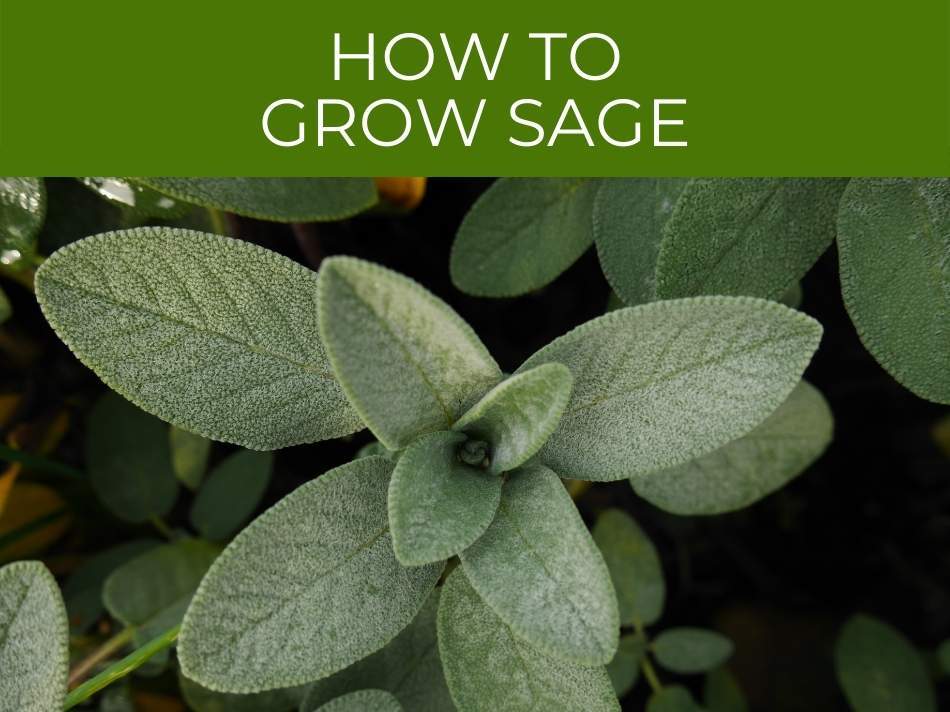Sage is an easy plant to grow, has many culinary uses, and is an attractive ornamental plant. Sage is more than just an herb to use on turkey only at Thanksgiving. And it’ll make your garden appear lush.
Place sage plants 18-24 inches apart, in rich, slightly acidic soil with pH between 6.0-7.0. Plant sage in spring or fall. Sage does best in full sun, but can be grown indoors by a sunny window. In very cold or hot climates in USDA zones 1-4 and 10-12, sage grows as an annual, but in zones 5-9, sage grows as a perennial.
With a bit of research, learning how to grow sage is an investment that can reap a harvest – literally – for years to come.
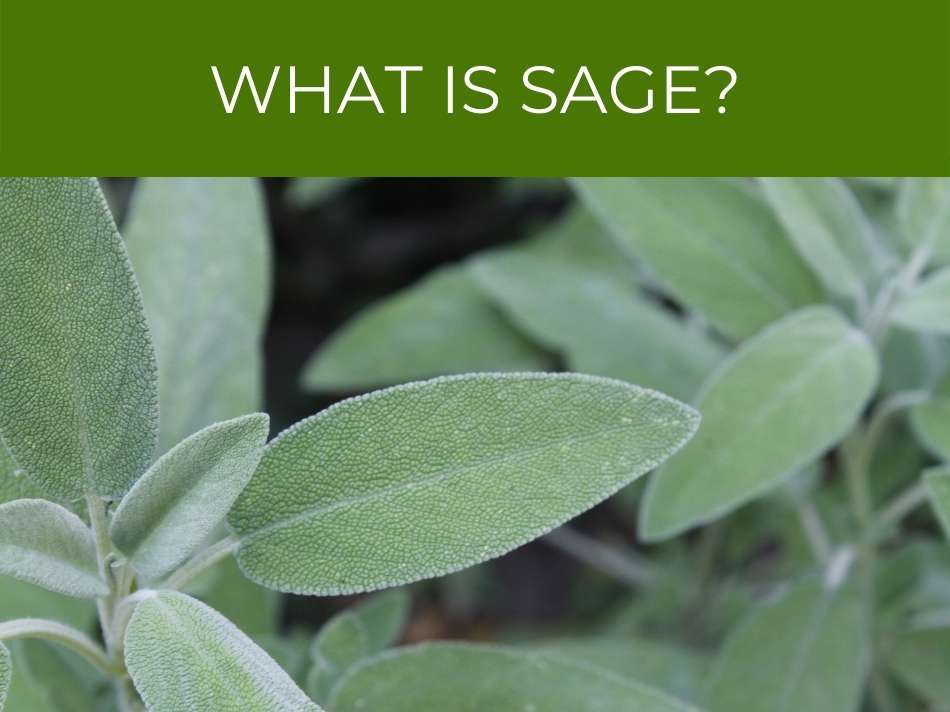
What is sage?
Sage is a perennial herb that grows as a woody shrub about 2 or 3 feet tall. As it grows, it has a tendency to sprawl. Many cultivated varieties, however, don’t grow quite so tall or sprawl as much. Sage leaves are usually gray-green and have a velvety or “pebbly” texture. White, blue or purple flowers – most commonly purple – bloom between spring and mid-summer.
Sage is commonly called garden sage or culinary sage. It originates along the northern Mediterranean – I don’t know about you, but that fact alone makes me want to plant it in my garden. There’s something romantic about this fragrant herb that was once regarded as ceremonially sacred by ancient Romans, and whose very name has come to mean “wise.” Perhaps sage would add a calm element to my backyard, and perhaps that calming element would influence my two preschoolers. One can hope.
Even though sage originated in southern Europe/Asia Minor, there are various plants that are used as sage, or called sage, around the world. “Wild sage” or “Indian sage” refers to a North American plant, and “sage of Bethlehem” actually refers to spearmint. There’s also a “sagebrush” that is native to the western United States and Mexico. “Russian sage,” which originated in China, Afghanistan, and Tibet, is actually not sage at all – it’s a member of the mint family.
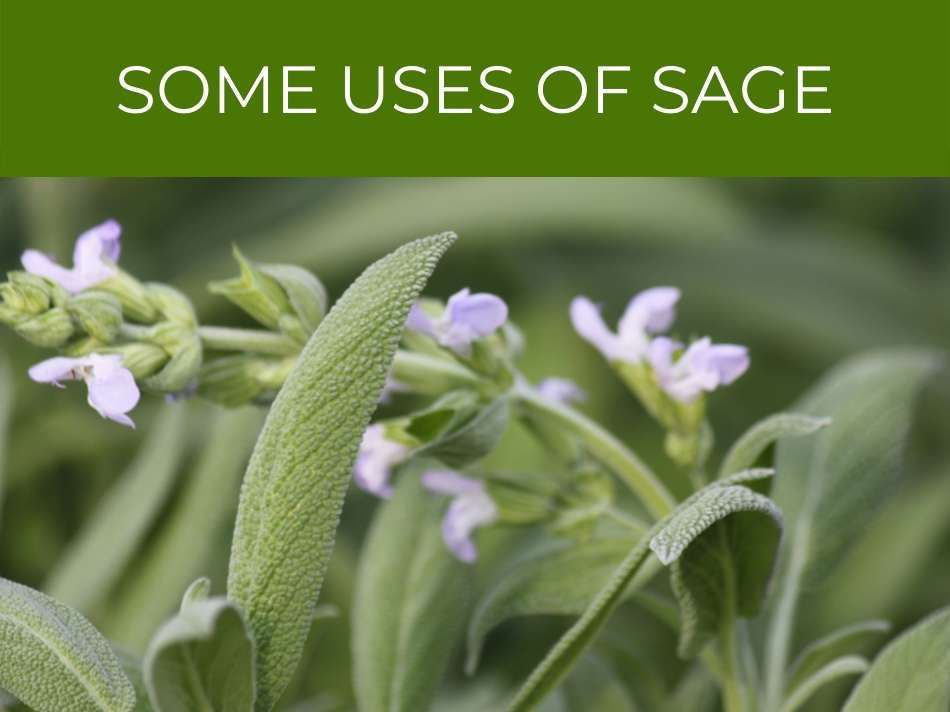
Some uses of Sage
Sage is commonly used as a culinary herb, but it actually has many different uses. It’s often grown ornamentally, as different varieties produce different patterns and colors of foliage. It can also be used as a medicinal plant to treat a variety of ailments, and its oils can be used cosmetically and as insect repellent. I’ll get into those details later in the article – there’s a lot to say about the uses of sage!
Just as there are many uses for sage, there are many different varieties of the plant. The right variety to grow will depend on what you are using it for, and what gardening zone you live in.
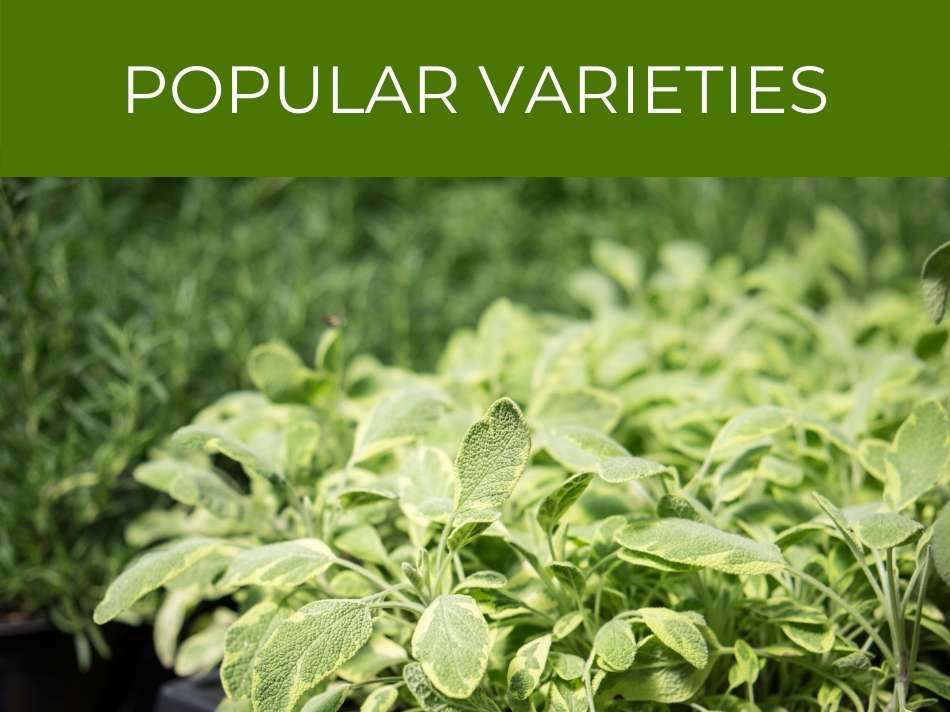
Popular varieties
Bergartten
Say it out loud and hear the German. If you want to talk about romantic origins, this plant was first discovered growing at the Bergartten Mansion in Germany. I have no idea what the Bergartten Mansion looks like, but it sounds fancy and regal. It’s bushy, with larger-than-average leaves, mildew resistant, and hardy to zone 5. The leaves are the classic “sage” color that you see on paint chips at hardware stores.
Golden sage
This plant is a lovely ornamental plant. It’s compact, with pale yellow leaves complemented by dark green smudges. This plant does best in zone 6.
Compacta
As its name suggests, this plant is compact. It only grows 10 inches high, does not sprawl the way regular sage does, but still delivers the powerful flavor of sage. This is a good choice for small areas or borders.
Holt’s mammoth
Once again, the name is very telling. Similar to the standard sage, but bigger.
Purple sage
This sage has – you guessed it – lovely purple leaves. The leaves have a strong flavor. Don’te that this plant does best in zone 6 – it’s not as hardy as common sage.
Tricolor
This sage has a lovely design of white, green and pink on its leaves. It’s not as hardy as common sage, but it can be grown as a houseplant, so it’s easy to sidestep any climate limitations.
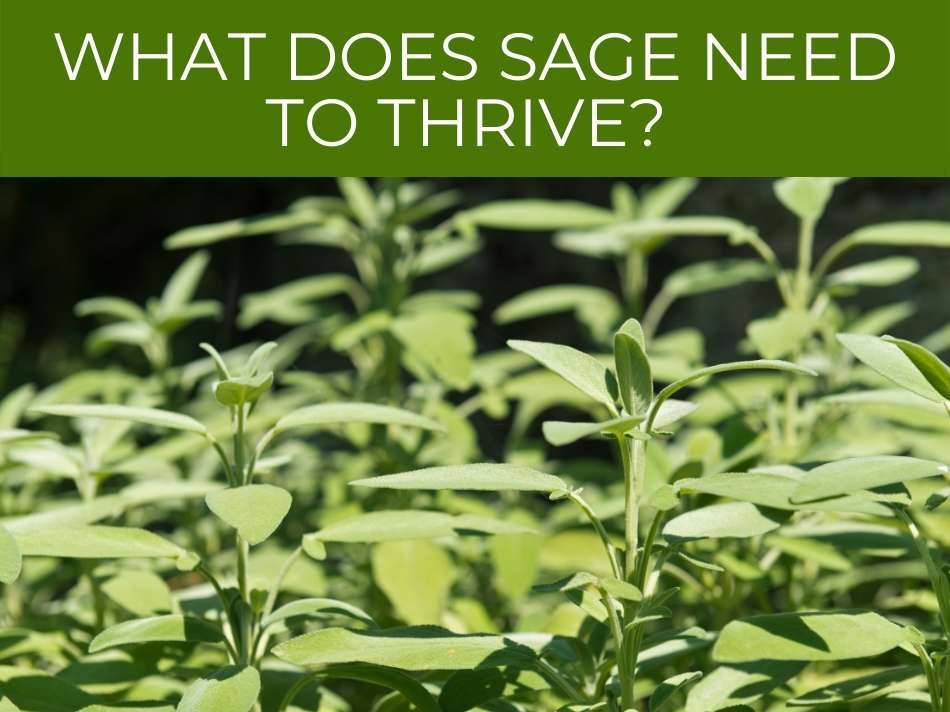
What does sage need to thrive?
All plants need the right combination of soil, sun and water. For sage, the right combination of those things looks like this:
Soil
Sage needs well-drained, sandy soil. Like many herbs, sage does not require a highly fertile soil. In fact, growing herbs like sage in overly fertile soil can result in many leaves with inferior flavor. So, if you’re planning to cook with your sage, you want to prioritize quality over quantity. Adding some peat moss and compost to soil – about 4 inches – can help provide adequate nutrients and retain moisture.
Sun
Sage does best with full sun. Plant outdoor sage in a sunny spot in the garden or keep sage indoors in a sunny windowsill. As you watch the sage leaves soak up the sun, reminisce about its Mediterranean origins and fantasize about a future vacation to its homeland.
Water
Coming from a warm, dry region, sage can handle some dry spells. However, sage will do best with consistent watering. For sage, “consistent watering” means about once a week or two. (Yup, that’s a different definition than many of your other garden plants, especially vegetables, so be careful.)
Sage is hardy to gardening zones 4-10, but excessive heat and humidity in zones 9 and 10 are something to be cautious about. Growing sage in colder zones may require potting up the plants in the fall, or simply growing sage as an annual.
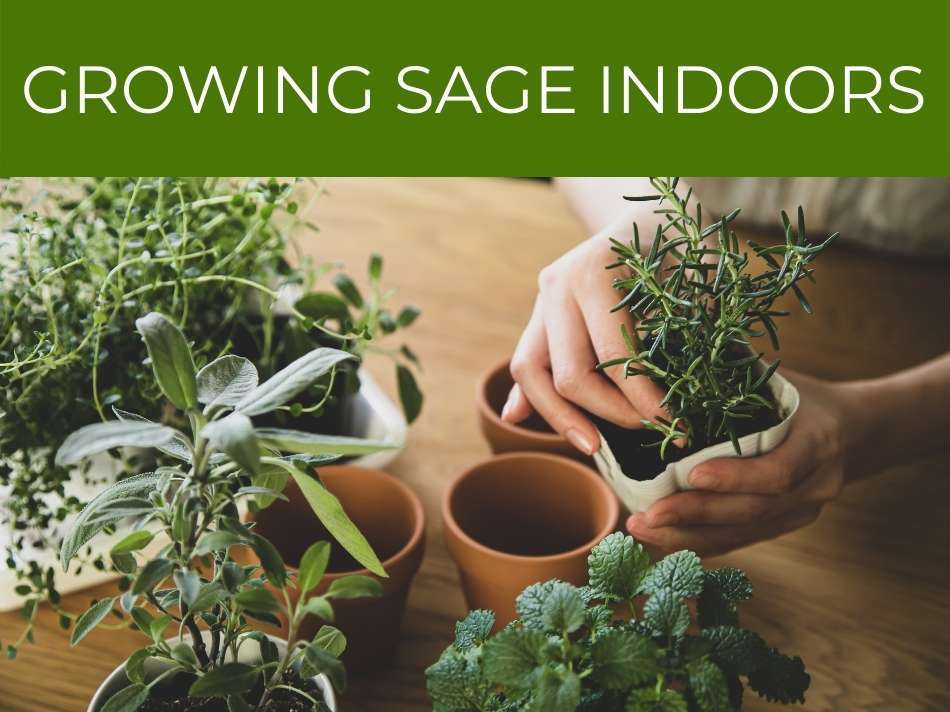
Growing sage indoors
Some varieties of sage do very well growing indoors, particularly the compact varieties. When growing sage indoors, follow the same guidelines as above. Be sure to provide well-drained soil with adequate nutrients, plenty of sun, and consistent watering – but not too much watering.
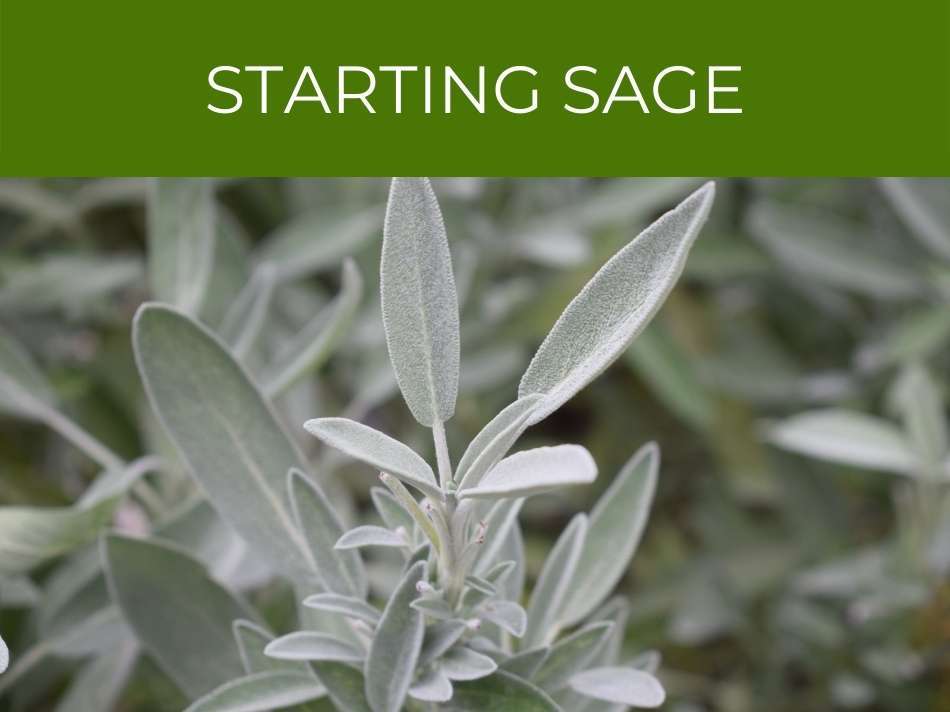
Starting sage
Okay, so you’re “sold” on growing sage. (Or maybe you already were, and that’s why you’re reading this!) There are several different ways to start sage.
Starting sage from seed
Sage is pretty straightforward to start from seed, but, for many varieties, seeds are not available. If you are able to get the seeds for the type of sage you want, plant the seeds directly in the garden around the date of the last expected frost. Or, to get a head start, begin seeds indoors 6-8 weeks before the last frost date. Sage takes about 75 days to get from seed to harvest.
Starting sage from layering
Layering is a propagation process that works with several different herbs. To layer, take a long stem and remove the lower half of its leaves. Bury this part of the stem in the ground, ensuring that the leaves on the top of the stem are above the ground. Water and care for your plant as usual, and roots will begin to grow from this underground stem. After a few weeks, you can cut the stem from the original plant and move it.
To propagate sage this way, layer established stems in the early spring or in the fall.
Starting sage by division
Different varieties of sage have a tendency to sprawl. As with many perennial plants that spread, dividing plants is an easy way to obtain “new” plants and prevent overcrowding. Dividing is also one of those beautiful ways gardeners can connect with each other. It’s a lovely thing to be given a plant from a friend who is dividing; it’s a gift that didn’t cost a penny.
For sage, carefully divide large, established plants in the spring.
Starting sage from stem cuttings
Compared to other plants, herbs pose a greater challenge when it comes to collecting and saving their seeds. For many herbs – sage being one of them – propagation by cuttings is an easier method.
A good time to take cuttings is in the summer. This way, plants grown from cuttings can be used in pots over the winter.
First, select a branch that looks strong and healthy and has not yet flowered. With clean, sharp scissors, make an angled cut about 4 inches long.
Now you have two choices. You can dip the bottom of the cutting into a glass of water, roll it around in a root hormone, and then plant it in a pot to cultivate indoors for a few weeks. If you do things this way, be sure to put the root hormone you need in a separate dish; dipping the sage directly into the bottle can contaminate the contents.
Or, you can simply put the cutting in a glass of water and watch it create new roots that way. Be sure to change the water every few days to keep it free of bacteria. New roots should appear in about a week, and when roots are half an inch long the plant can be transferred outside or into a pot. No root hormone required.
Warning: many sources note that propagating cuttings is an addicting way to “create” new plants. Your windowsill may quickly become overcrowded with stems in glasses of water.
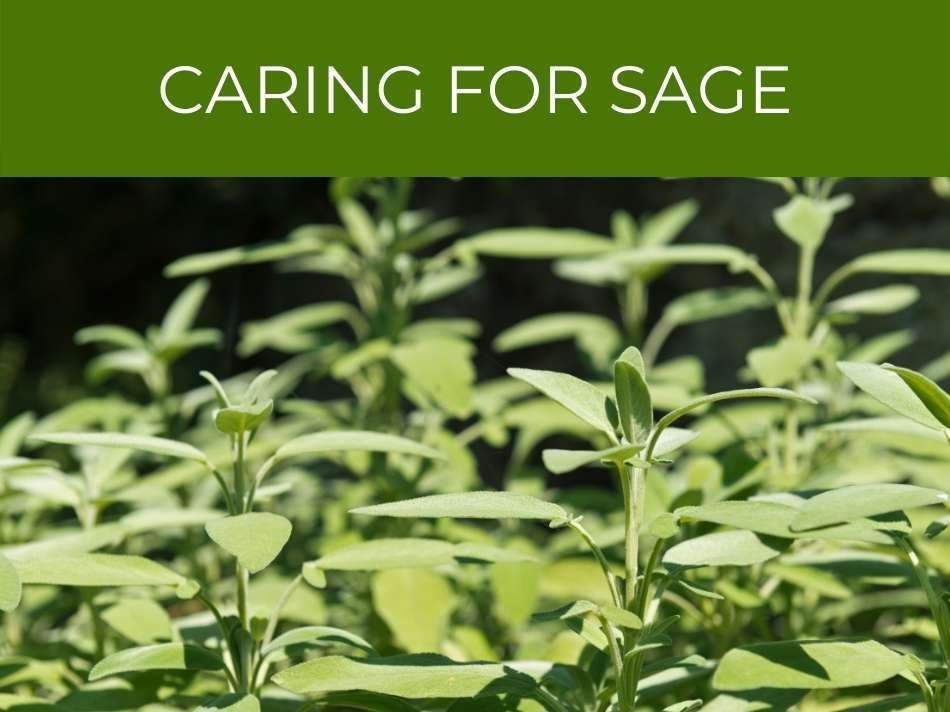
Caring for sage
Step one in caring for sage is to set up the right environment, as described above, with well-drained soil and lots of sun.
From there, caring for sage can change depending on the year and the time of year. Keep in mind that sage is a perennial plant, so expectations of harvest can vary year to year.
If you are starting sage by seed, it may not flower at all in the first year. Remember that, even if the harvest is small or nonexistent in the first year, sage is a long-term perennial investment. Pruning sage each spring and, if desired, moving plants indoors at the end of the season, will help maximize this investment.
Over time, sage plants become woody and need to be replaced. The exact timeline will depend on the variety of sage that you have, but replacing sage plants every five years is a good general rule. Remember, you can replace your plants by layering, dividing or propagating stems from your existing plant.
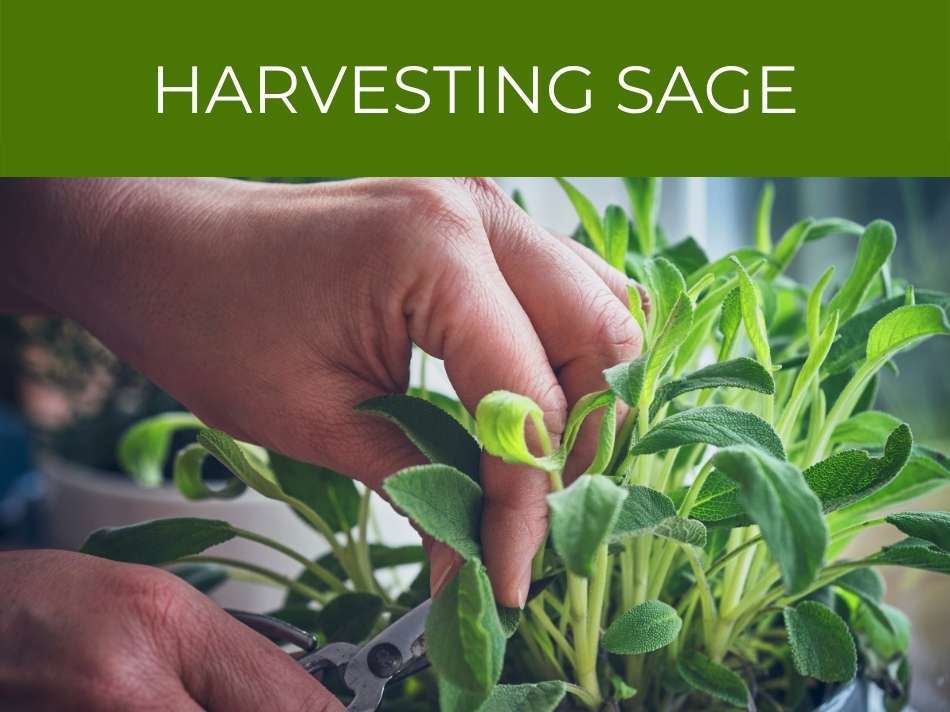
Harvesting sage
When growing sage, you should cut about 6 inches from the top of the plant at least twice in the growing season. Like many herbs, you can pick leaves as you need them. Just be sure to not pick more than half the plant. If you over-pick, the sage will stop producing.
Remember, too, the common theme for many garden plants where the leaves are the desired product – be sure to harvest before the plant flowers. Cutting it down and harvesting through the growing season will help delay this flowering. You want to keep your plant’s energies focused on leaves, not flowers, as long as possible to maximize harvest.
After harvesting young sage, before it blooms, be sure to strip leaves off the stems before using. For many people, sage can be harvested a little at a time. That’s the beauty of fresh herbs – having them on hand to pluck just before you need to add them to a recipe.
Fresh sage can be wrapped in a damp paper towel, placed inside a plastic bag, and stored in the refrigerator for about a week. For longer term storage, sage can be tied in a bundle and hung inside a paper bag with plenty of holes to allow for air circulation. Hung in a place with dry, moving air, sage will dry in a few weeks. If you’re like me, your house already has different projects-in-process laying around, so the idea of hanging sage in paper bags is no problem. If you want to dry sage more quickly, you can also put your oven on low heat and dry it that way.
To freeze sage, simply wash and dry whole leaves. Place inside a bag or container and store in the freezer for up to a year.

Troubleshooting
If you keep sage in well-drained soil, and keep plants spaced apart, you will prevent most disease and pest problems. Sage is not a prime target for either issue, so in general your risk is low if you follow those basic recommendations.
Be sure to check the specific guidelines for your sage variety, in terms of plant spacing. Keeping good air circulation between plants will prevent foliar disease.
While sage is not prone to problems, as I mentioned, if problems do arise it’s often root wilt or root rot. Both issues can be prevented by well-drained soil, to ensure that roots aren’t sitting in too much moisture.
Slugs and spider-mites are potential pests to your sage plants. Depending on the variety, slugs and snails can be attracted to the tender foliage of young sage plants.
Ecofriendly ways to deal with slugs and snails:
- Handpicking (at night, when they come out of hiding)
- Removing any debris that they can hide under during the day
- Putting down strategic debris – like a piece of old carpet – that will attract them, making it easier for you to catch them in one spot
- Putting gritty material around your plants
- Setting beer traps by placing a container of beer half-buried in the garden. Be sure to leave a small “lip” above the soil that slugs and snails can climb over but that will prevent friendly garden insects – like the beetles that eat slugs and snails – from drowning in your trap.
Once you catch slugs and snails, put them in a secure container. One source I read claimed that “strong slugs” can pry the lids off of yogurt containers! This is an image I will be thinking about every time I see a slug or snail, to be honest. Don’t just dump your slugs on the other side of the yard – they will find their way back to your garden, pests that they are. Consider offering them as tasty, protein-rich morsels to the ducks at your local park. They will thank you for it.
Spider-mites
Spider-mites, another potential pest, are tiny creatures that are not even proper insects. They are prolific, and large colonies live on the undersides of leaves. Although tiny, they can do significant damage as they pierce plant tissue and feed on it. The webs they create on the underside of leaves are the main evidence of their presence, as well as the yellowing, damaged and curling leaves of the plant itself.
Spider-mites can be prevented, ironically, by not using harsh insecticides that kill off their natural predators. Conversely, they can be treated by the addition of predators such as ladybugs and lacewings. If you see evidence of spider-mites, remove the infected plants or parts of plants immediately, and put them in the trash (not the compost pile).
Rinsing down plant leaves, or applying soaps and washes, can also prevent and treat spider-mite infestations. Spider-mites lay many eggs, so in most cases you need to repeat any treatments.
Don’t let all this scare you, though. In general, sage – like most herbs – is pretty resistant to pests and disease.
Uses for sage
Sage is a popular herb because it has so many uses.
Culinary uses
One of the most common uses for sage is as a culinary herb. Sage has a strong flavor that is frequently used in sausages, stuffings, sauces, vinegars and butters. Sage complements poultry, fish and pork dishes; for many Americans, the smell of sage brings to mind turkey stuffing at Thanksgiving.
When cooking with fresh sage, add it near the end of the cooking time to preserve the herb’s flavor. If your recipe calls for dried sage, you can replace it with about 3 times the amount of fresh sage.
Medicinal purposes
Sage has also been used for thousands of years for medicinal purposes. The scientific name for sage, Salvia, is derived from a Latin word meaning “to heal.” I have to be honest – the list of ailments sage can supposedly treat is very long, very impressive and almost unbelievable. I’m seeing lists – from reputable sources–that include toothaches, snakebites, venereal disease, “excessive perspiration,” colds, diarrhea, and cancer. On a preventative note, sage is an antibacterial ingredient in mouthwashes and a substance that supposedly improves the memory. I’m curious to try some of these out.
Ornamental uses
Besides all of these practical uses, sage can also be used simply for ornamental reasons. Different varieties of sage offer beautiful foliage – from velvety, silvery leaves to leaves framed in white and streaked with pink – for most of the growing season. Sage flowers, on display for part of the growing season, add a spike of blue, white or purple to gardens or containers.
Even used ornamentally, however, sage will still offer practical garden benefits. Many varieties of sage attract bees, butterflies and hummingbirds to the garden, increasing your yard’s biodiversity and the pleasure of watching these creatures do their thing.
Essential oils
Essential oils derived from sage can be used in cosmetics and perfumes. I live in northern Ontario, and northern Ontario at the time of this writing is plagued by mosquitoes. So, the claim that sage oil can be used as a “natural insect repellant” is of particular interest to me. I’ll try anything at this point!
Related questions
How long does it take to grow sage?
From seed to harvest, sage takes about 75 days to grow. Beginning sage plants by stem cuttings, or dividing and layering existing plants, will save you time.
Is sage easy to grow?
If you’re in the right gardening zone (zones 4-10), sage is easy to grow. It’s a hardy perennial herb that gives back a lot – in looks and in use – for the little maintenance that it requires.
How often should I water sage?
In the first few weeks of transplant, water sage at least once or twice a week. After that, watering once a week or two should be fine. Sage originates from a dry, warm climate – it doesn’t like to be overwatered!
Get growing!
Hopefully by now you’re convinced that sage is a great plant. It’s a lovely shrub with elegant leaves. It packs savory flavour. It’s apparently a home-remedy powerhouse. It’s a hardy perennial that is not easily knocked out by pests and disease. It’s easy to maintain, easy to harvest, and easy to store for short- and long-term use.
For those of you in zones 4-10, I hope you give sage a try. For my fellow zone 3 gardeners, who may be wishing they lived in a more sage-friendly climate – as I am at the moment – I hope you’ll join me in giving sage a try indoors!

